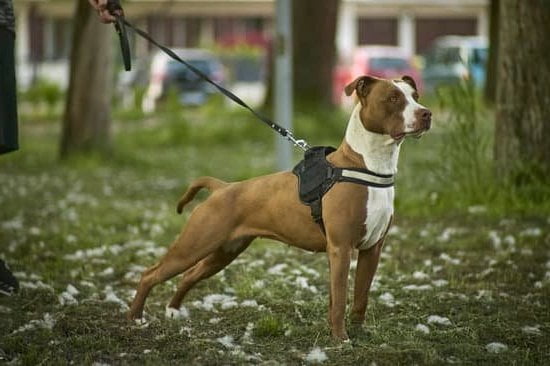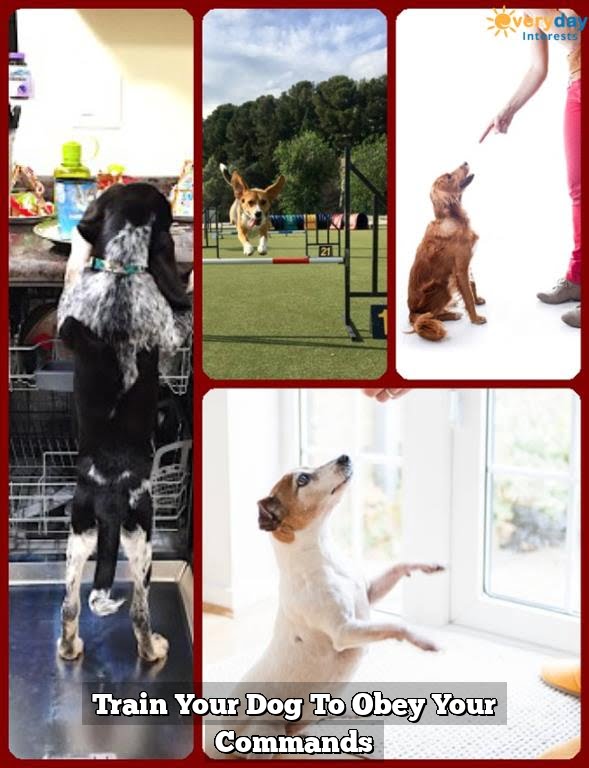Training your dog to obey commands is essential for their well-being and the harmony of your household. In this introductory section, we will delve into the benefits of a well-trained dog and how obedience training strengthens the bond between you and your furry companion.
A well-trained dog not only makes life easier for their owners but also ensures their own safety and happiness. Obedience training provides structure and boundaries that help dogs navigate through daily life with confidence and ease.
It enables them to understand what behavior is expected of them in various situations, whether it’s walking calmly on a leash, greeting guests politely, or staying calm during mealtime. A trained dog is less likely to engage in destructive behaviors, such as excessive barking, chewing on furniture, or digging up the garden.
Furthermore, obedience training serves as an avenue for communication and connection between you and your furry friend. By teaching your dog to obey commands, you establish yourself as a trusted leader and build a foundation of trust and respect. This bond allows for effective communication, mutual understanding, and harmony within your relationship.
Through this article, we will explore not only the importance of training your dog to obey commands but also provide practical guidance on how to achieve successful obedience training.
From setting the foundation of trust and leadership to mastering essential commands, positive reinforcement techniques, clear communication cues, tackling common challenges, choosing the right equipment, maintaining consistency throughout your dog’s life journey, engaging in advanced training and tricks – all aspects covered here aim to equip you with valuable insights for a fulfilling obedience training experience with your canine companion.
Setting the Foundation
Establishing trust and leadership is crucial when training your dog to obey commands. Dogs are pack animals by nature, and they look to their owners as leaders. By establishing yourself as the leader of the pack, you will create a strong foundation for obedience training.
One essential aspect of building trust with your dog is consistency. Dogs thrive on routine and structure, so it’s important to establish consistent expectations and boundaries. Make sure everyone in the household is on the same page when it comes to training commands and rules for your dog. This will prevent confusion and ensure that your dog receives consistent guidance.
Another technique for establishing yourself as the leader is through positive reinforcement. Reward-based training methods have proven to be highly effective in teaching dogs new behaviors. When your dog follows a command correctly, reward them with praise, treats, or playtime. This positive association will motivate your dog to repeat the desired behavior.
To further solidify your role as the leader, incorporate structured activities into your daily routines. Taking your dog for regular walks or engaging in interactive play sessions can help establish you as their provider, protector, and guide. These activities not only provide physical exercise but also mental stimulation, which is essential for a well-rounded and obedient dog.
Essential Commands Every Dog Should Know
Exploring fundamental commands like sit, stay, and come
One of the first steps in training your dog to obey commands is teaching them the essential commands that are fundamental for their safety and well-being. The three basic commands that every dog should know are sit, stay, and come. These commands serve as building blocks for more advanced training and provide a solid foundation for your dog’s obedience.
The “sit” command teaches your dog to sit on their hind legs and maintain that position until you release them. This simple command is incredibly useful in various situations, such as when you need your dog to remain still while you put on their leash or when guests arrive at your home. The “stay” command instructs your dog to remain in a specific position until given a release cue.
This command helps prevent accidents or dangerous situations where your dog might run off or get into something they shouldn’t. Lastly, the “come” command encourages your dog to return to you immediately upon hearing the cue. This command is crucial for both safety and convenience, ensuring that your dog comes back to you when called, even in distracting environments.
Step-by-step guide on how to teach these commands effectively
Teaching your dog these essential commands requires patience, consistency, and positive reinforcement. Start by finding a quiet area with minimal distractions where you can work one-on-one with your furry friend. Begin with the “sit” command by holding a treat close to their nose and slowly lifting it upwards while saying “sit.”
When their bottom touches the ground naturally, reward them with verbal praise or a treat. Repeat this process multiple times daily until they begin associating the word “sit” with the action of sitting down.
To introduce the “stay” command, have your dog sit and then show them an open palm facing towards them while saying “stay.” Take a step back and wait for a few seconds before returning to their side to reward them with praise and treats. Gradually increase the time and distance as your dog becomes more comfortable with the command.
For the “come” command, it’s essential to use a positive and inviting tone of voice. Begin by saying “come” in an enthusiastic manner and rewarding your dog when they approach you. Start practicing this command in a controlled environment before gradually adding distractions outside or in different locations.
Practical applications and scenarios where these commands prove valuable
The beauty of training your dog in essential commands is that they can be applied in numerous situations. The “sit” command can be used to prevent jumping on guests, calm your dog during grooming sessions, or simply ensure proper manners in social settings.
The “stay” command is beneficial when you need your dog to remain still while you clean up spills, answer the door, or allow strangers or other animals to pass by. Lastly, the “come” command is essential for off-leash activities like hiking or visiting a dog park, ensuring that your dog comes back to you promptly when called.
These everyday scenarios highlight how mastering these fundamental commands creates safer and more enjoyable experiences for both you and your four-legged companion. By patiently teaching and reinforcing these essential commands, you are not only establishing boundaries but also fostering a deeper level of communication and understanding between you and your beloved pet.
Positive Reinforcement Techniques
Positive reinforcement is a highly effective and humane training method that utilizes rewards to motivate and encourage desired behavior in dogs. This section will delve into the power of positive reinforcement techniques and how they can be used to achieve success in obedience training.
Using rewards such as treats, praise, and play allows you to communicate to your dog that they have performed the desired behavior correctly. By associating the action with a positive outcome, your dog becomes more motivated to repeat that behavior in order to receive the reward again. This creates a positive and enjoyable learning experience for both you and your furry companion.
When implementing positive reinforcement techniques, it is important to choose appropriate rewards that are highly valued by your dog. For some dogs, treats may be their preferred reward, while others may respond better to verbal praise or a favorite toy. Understanding what motivates your individual dog will help ensure the effectiveness of the training process.
To effectively use treats as rewards, it is crucial to deliver them at the right time. Timing is everything in positive reinforcement training. You should give the treat immediately after your dog performs the desired behavior so they can make a clear association between their action and the reward. In addition, using an enthusiastic tone of voice when giving verbal praise or engaging in play can further reinforce your dog’s understanding of their accomplishment.
It is worth noting that while positive reinforcement is highly effective, it is important not to solely rely on rewards without providing clear boundaries and consistent expectations for your dog’s behavior. Combining rewards with other aspects of obedience training like setting rules and establishing leadership will enhance the overall effectiveness of your training sessions.
By embracing positive reinforcement techniques, you can create a harmonious and enjoyable learning environment for your dog. Remember to select suitable rewards based on what motivates them most, practice impeccable timing when delivering rewards, and combine this approach with other essential elements of obedience training. With patience, consistency, and plenty of love, you will lay a solid foundation for your dog’s success in obeying commands.
Clear and Consistent Communication
Effective communication is key in any relationship, including the one between you and your dog. When it comes to obedience training, clear and consistent communication is essential for success. In this section, we will explore the importance of clear communication in dog training and provide tips on how to master verbal and non-verbal cues.
Understanding the importance of clear communication:
Clear communication is crucial in teaching your dog to obey commands. Dogs rely heavily on your cues to understand what is expected of them. Using consistent language, tone of voice, and body language helps your dog understand what you want from them. In addition to verbal cues, dogs also respond well to non-verbal cues such as hand signals or facial expressions. By mastering both verbal and non-verbal cues, you can create a stronger connection with your furry companion.
Teaching your dog to respond to vocal commands:
Vocal commands form the basis of communication between humans and dogs. It is important to choose simple words or phrases for commands that are easy for your dog to understand. Start with basic commands like “sit” or “stay,” using a firm yet calm voice. Repeat the command clearly several times, ensuring that they understand what is expected of them. Once your dog responds correctly, reward them with praise or treats as positive reinforcement.
Utilizing hand signals and body language:
In addition to vocal commands, incorporating hand signals and body language into your training can enhance clarity for your dog. Dogs are highly perceptive when it comes to visual cues, making hand signals an effective way of communicating with them. For example, raising an open palm parallel to the ground can signal “stop” or “stay.” Consistency is key when using hand signals – be sure to use the same gesture each time you give a specific command.
Mastery of verbal and non-verbal cues allows for effective communication during obedience training. By being clear and consistent, you can ensure that your dog understands the commands you give them, making for a smoother and more successful training process.
| Verbal Cues | Non-Verbal Cues |
|---|---|
| Vocal commands such as “sit” or “stay” | Hand signals like an open palm parallel to the ground to signal “stop” or “stay” |
| Selecting simple words or phrases | Consistent use of hand gestures for specific commands |
| Firm yet calm voice | Clear facial expressions to convey expectations |
Overcoming Common Training Challenges
Identifying Common Training Challenges
When it comes to training your dog to obey commands, it is important to anticipate and address the common obstacles and setbacks that may arise during the process. By understanding these challenges, you can better prepare yourself and your furry companion for successful training sessions.
One common challenge in obedience training is distractions. Dogs have a natural curiosity and can easily become distracted by their surroundings. This can make it difficult for them to focus on following commands. To overcome this challenge, start training in a quiet and controlled environment. As your dog becomes more comfortable with the commands, gradually introduce distractions such as noises or other people and pets. This will teach your dog to obey commands no matter what the environment may be.
Another challenge you may encounter is stubbornness. Some dogs are naturally more independent-minded and may try to resist following commands. If your dog displays stubborn behavior, it is essential to remain patient and consistent in your training approach. Break down the command into smaller steps and reward even slight progress. By reinforcing positive behavior consistently, you can motivate your stubborn pup to eventually comply with the desired command.
Troubleshooting Techniques for Successful Training Sessions
In addition to distractions and stubbornness, another common challenge in obedience training is aggression. Whether directed towards humans or other animals, aggressive behavior can complicate the training process. It is crucial to understand that aggression is often rooted in fear or anxiety, so addressing the underlying emotions is essential.
If your dog displays aggressive tendencies during training sessions, consult with a professional dog trainer or behaviorist who specializes in aggression. They can provide guidance on how to help manage aggressive behaviors safely while continuing with obedience training.
Consistency in your approach is key when overcoming these common challenges. Ensure that all family members or individuals involved are using the same commands and techniques consistently so as not to confuse the dog.
Remember that every dog learns at their own pace, and training setbacks are common. Be patient, persistent, and adapt your techniques as needed to address the specific challenges you encounter.
Methods to Tackle Issues like Distractions, Stubbornness, and Aggression
To address distractions during training sessions, gradually increase the level of distractions over time. Start training in a quiet place with minimal distractions and then gradually introduce more challenging environments. Reward your dog for maintaining focus despite the distractions and use positive reinforcement techniques consistently.
Addressing stubbornness requires patience and persistence. Break down commands into smaller steps that are easier for your dog to understand and follow. Use rewards such as treats or praise to motivate your dog to comply with each step of the command. As you progress through the training process, gradually increase the difficulty of the commands until your dog can reliably obey them.
If your dog displays aggressive behavior during training, it is important to consult with a professional who can help address these issues safely. They may recommend behavior modification techniques or additional measures to manage aggression while continuing obedience training.
By applying these methods and troubleshooting techniques, you can overcome common challenges in obedience training and ensure successful training sessions with your furry companion. Remember that each dog is unique, so tailor your approach accordingly to best meet their individual needs during the training process.
Training Tools and Resources
When it comes to training your dog to obey commands, having the right tools and resources can make a world of difference. The proper equipment can enhance your training sessions, improve communication with your furry friend, and ultimately lead to greater success in achieving obedience. In this section, we will explore various training tools and resources that can help you choose the right equipment for your dog’s training needs.
- Clickers: Clickers are a popular tool used in positive reinforcement training. They produce a distinct sound that acts as a marker to signify when your dog has performed a desired behavior correctly. This clear signal helps your dog understand what they did right and reinforces their motivation to repeat the behavior.
- Harnesses: Harnesses are an excellent tool for controlling your dog’s movements during training sessions. They distribute pressure evenly across their body, reducing strain on their neck and throat that traditional collars may cause.
- Leashes: A reliable leash is essential for maintaining control and ensuring safety during training exercises and outdoor walks. Consider using a standard leash made from durable materials like nylon or leather, with an appropriate length that allows freedom of movement while still maintaining control over your dog.
- Treat pouches: Treat pouches are handy accessories that keep rewards easily accessible during training sessions or walks. These pouches often come with multiple compartments to hold treats, clickers, or other small items necessary for effective training.
- Recommended resources: There are several books and online platforms dedicated to dog training that can provide valuable guidance throughout your obedience journey. Some popular resources include “The Art of Raising a Puppy” by the Monks of New Skete, “The Power of Positive Dog Training” by Pat Miller, and “Zak George’s Dog Training Revolution” YouTube channel.
By carefully selecting the right tools and resources, you can set yourself up for success when it comes to training your dog to obey commands. Remember, each dog is unique, so it may be necessary to try different equipment and resources to find what works best for you and your furry companion. The key is to choose tools that are safe, comfortable, and effective in helping you establish a positive and productive training experience.
Consistency and Persistence
Maintaining obedience throughout your dog’s life requires consistency and persistence. Once you have established a foundation of trust and leadership with your furry companion, it is essential to continue reinforcing the training and commands on a regular basis. In this section, we will discuss the importance of consistency in dog training, integrating obedience commands into daily routines and activities, as well as strategies for continuous reinforcement and long-term success.
Consistency in dog training is crucial for several reasons. Dogs thrive on routine and structure, so sticking to a consistent training schedule helps them understand what is expected of them. By consistently using the same commands and cues, your dog will become more familiar with them over time. This will lead to quicker response times and improved overall obedience.
Integrating obedience commands into your daily routines and activities is an effective way to reinforce the training regularly. For example, incorporating commands such as sit or stay during mealtime or before going for a walk can help solidify their understanding. Consistently applying these commands in different scenarios will create a habit for your dog to respond appropriately in various situations.
| Importance of Consistency | Benefits |
|---|---|
| Establishes a routine and structure | Improved response time |
| Familiarizes dogs with commands | Enhances overall obedience |
Continuous reinforcement is vital to maintain your dog’s obedience throughout their life. The occasional refresher training sessions can be beneficial in ensuring that they do not forget the commands they have learned. These sessions can be shorter than the initial training but should still incorporate positive reinforcement techniques such as treats, praise, and play. By consistently reinforcing the training, you are reinforcing the behavior you want to see from your dog.
In addition to reinforcement sessions, it is important to be persistent in addressing any setbacks or challenges that may arise in your dog’s obedience. If they start exhibiting disobedient behavior, it is crucial to address it promptly and provide appropriate correction. Consistently enforcing boundaries and expectations will help maintain their obedience and prevent any regression in their training.
By remaining consistent and persistent in maintaining your dog’s obedience throughout their life, you are ensuring a harmonious and enjoyable relationship with your furry companion. Consistency provides structure, reinforces learned behaviors, and strengthens the bond between you and your dog. With persistence, you can overcome any obstacles or setbacks that may arise, leading to long-term success in their training.
The Fun Side
Engaging your dog in advanced training and tricks can be a fulfilling and exciting journey for both you and your furry companion. Once your dog has mastered the basic obedience commands, you can expand their skills and challenge their mental abilities with more advanced training exercises. Not only will this keep them mentally stimulated, but it will also strengthen your bond and create a deeper connection between you and your well-trained companion.
One way to engage your dog in advanced training is by introducing them to fun tricks. These tricks can range from simple behaviors like spinning or rolling over to more complex tasks like retrieving specific objects or even performing acrobatic maneuvers.
The key is to start with achievable goals and gradually increase the difficulty level as your dog becomes more confident and skilled. Remember to always use positive reinforcement techniques during this process, rewarding your dog with treats, praise, or play whenever they successfully accomplish a trick.
Another aspect of advanced training that you can explore is specialized skills such as agility, scent detection, or advanced obedience. Agility training involves teaching your dog to navigate through an obstacle course consisting of ramps, tunnels, hurdles, and weave poles.
This not only helps improve their physical fitness but also enhances their coordination and focus. Scent detection training allows your dog to use their sense of smell to locate specific scents or objects, which can be useful in various scenarios such as search-and-rescue operations or detecting illegal substances.
Advanced obedience training focuses on refining the basic commands your dog has already learned and introducing more complex tasks that require precision and concentration. This can include off-leash obedience, where your dog is expected to obey commands even without being physically restrained by a leash. It may also involve distance control exercises where you cue your dog’s behavior from afar using signals or verbal cues.
Engaging your dog in advanced training and tricks not only showcases their impressive abilities but also provides mental stimulation and challenges for them as they continue to learn. It encourages problem-solving skills, boosts their confidence, and strengthens the bond you share with your furry friend. Remember to always enjoy the process, be patient, and celebrate every milestone achieved along the way. Together, you and your well-trained companion can embark on this fun and rewarding journey of advanced training.
Conclusion
In conclusion, training your dog to obey commands is not just about instilling discipline and control, but it also provides numerous benefits for both you and your furry companion. By establishing trust and leadership, you create a strong foundation for obedience training and build a deeper bond with your dog. Through the essential commands they learn, such as sit, stay, and come, you can effectively communicate with your pet in various practical situations.
Positive reinforcement techniques play a crucial role in successful obedience training. By using rewards that motivate your dog, such as treats, praise, and playtime, you can encourage desired behaviors and strengthen the training process. Additionally, clear and consistent communication is key in ensuring that your dog understands your verbal commands while utilizing hand signals and body language provides further reinforcement.
Overcoming common training challenges is an inevitable part of the obedience journey. From distractions to stubbornness or aggression, it’s important to address these obstacles head-on. By implementing troubleshooting techniques specific to each issue, you can ensure that every training session is productive.
Choosing the right training tools and resources is crucial for effective obedience training. From clickers to harnesses and leashes, understanding when and how to use these equipment will enhance your success. Additionally, there are recommended resources such as books or online platforms that provide further guidance on dog training.
Maintaining consistency throughout your dog’s life is vital to sustaining their obedience skills. By integrating commands into daily routines and activities, obedience becomes second nature for them. Moreover, engaging in advanced training and tricks not only keeps them mentally stimulated but also showcases their impressive abilities like agility or scent detection.
Ultimately, celebrating your dog’s obedience journey is a testament to the hard work put into their training. Reflecting on their progress allows you to appreciate the achievements made by both you and your furry companion. Most importantly, through obedience training comes a deeper connection between you both-a bond built on trust, communication, mutual understanding that strengthens your relationship for years to come.
Frequently Asked Questions
How do you discipline a dog that doesn’t listen?
Discipline is an important aspect of dog training, especially when dealing with a dog that doesn’t listen. It’s crucial to remember that discipline should be focused on positive reinforcement rather than punishment. First, identify the root cause for the dog’s disobedience, whether it’s due to lack of training or distractions in the environment. Consistency is key; establish clear rules and boundaries for your dog and consistently enforce them with rewards and consequences.
Reinforce good behavior by using treats, praise, or playtime as positive reinforcement. If a dog doesn’t listen, redirect their attention to the desired behavior using verbal cues or hand signals. Avoid yelling, physical force, or any form of harsh punishment as it can harm the bond you share with your pet.
How do I train my dog to listen to all commands?
Training your dog to listen to all commands requires patience, consistency, and positive reinforcement techniques. Begin by teaching basic commands such as sit, stay, come, and leave it using reward-based training methods such as treats or praise. Start in a quiet environment with minimal distractions before gradually increasing difficulty levels over time. Use consistent verbal cues or hand signals associated with each command to communicate clearly with your dog.
During training sessions, keep them short and engaging while maintaining a positive and energetic attitude. As your dog progresses, introduce distractions slowly to ensure they can follow commands even in challenging situations. Remember that dogs are individuals; some breeds may require more time and practice for complete obedience.
What to do when a dog doesn’t obey a command?
When a dog doesn’t obey a command despite proper training and reinforcement techniques, it’s essential to analyze the situation calmly before taking action. Firstly, consider whether the command was given clearly enough – sometimes our tone of voice or body language can unintentionally confuse our pets. Adjust if necessary before reissuing the command firmly but not aggressively. If the issue persists, reassess the training methods being used to check for consistency and effectiveness in motivating your pet towards desired behaviors.
Another possible reason for non-compliance could be distractions in the environment, making it difficult for your dog to focus. In such cases, practice commands in progressively more distracting environments to help them generalize the behavior. If obedience problems persist despite your best efforts, consulting a professional dog trainer may provide valuable insight and guidance tailored specifically for your dog’s needs.

Welcome to the blog! I am a professional dog trainer and have been working with dogs for many years. In this blog, I will be discussing various topics related to dog training, including tips, tricks, and advice. I hope you find this information helpful and informative. Thanks for reading!





